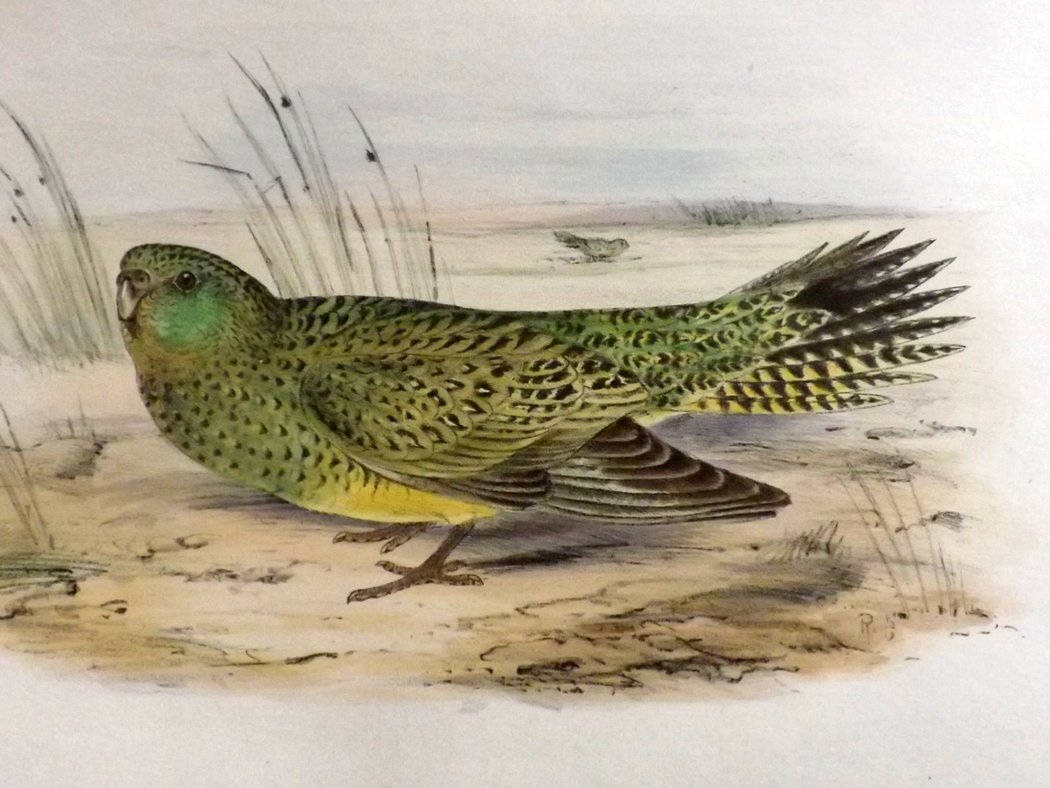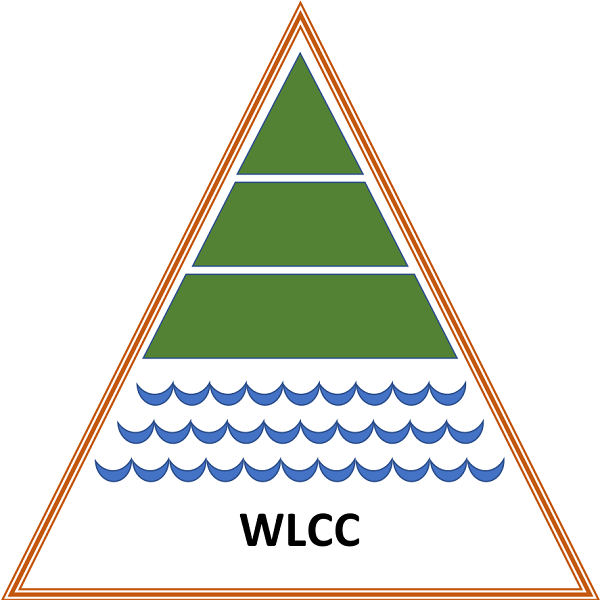Another first for bird watchers in Williams Lake Backlands
[Continue to enjoy our 2017 April Fool's Joke here. And "Thank You" to the people of Australia for the loan of their Night Parrot which you can read about here (Wikipedia)]
It’s been an exciting Spring here at the Williams Lake Conservation Company, and it was crowned by a confirmed sighting of a nocturnal bird long considered extinct. Joining the resident population of night owls and nighthawks in the Backlands is the Night Parrot (Pezoporus occidentalis) not seen for almost 200 years.
“It’s a wonder we didn’t look in the Backlands before” said bird enthusiast Chuck Wills, who could scarcely conceal his excitement. The terrain of jack pine barrens and broom crowberry creates the perfect scrubland for these mostly flightless birds, who make use of deer or beaver trails to forage after dark. “They even nest on the ground, and we are looking forward to setting up a webcam to capture any young that fledge this year”.

Joseph Howe’s Favourite Bird
The bird was a favourite of Joseph Howe – yes, that famous Father of Confederation – who was in the habit of hiking from the Northwest Arm to Williams Lake, where he’d swim to what is now known as “Joe Howe Rock”. In his collection of verse published posthumously, such classic poems as “To the Town Clock” and “Once More I Put My Bonnet On” are joined by “Yonder the Night Minstrel” his ode to the night parrot’s distinctive “whistle-whistle-squeak”. Click on the link below for a recording of the calls.
The night parrot is not a true parrot, although it looks like one. “It’s a case of parallel evolution” explains Karyn Plover of Ornithology.NS. “Their beaks have to crack similar pine nuts and seeds, so they look and behave like their parrot cousins. What makes them really different is their ground-dwelling behaviour.”
This of course is what spelled disaster for the night parrot historically. As settlers moved in to the Purcell’s Cove area, and began to exploit the land by quarrying rock and harvesting lake ice, the little birds were caught in the crossfire. “When they started using the old ice roads, and cart tracks from the quarry wagons, they and their nests were decimated”.
The sighting is further proof that the Backlands provides invaluable habitat for endangered and rare species. “We just missed getting P. occidentalis into the latest edition of Breeding Birds of the Maritime Provinces which came out in May of this year” lamented Wills. “We’ll be in the next edition for sure”.
The night parrot is the only true marsupial parrot, and thus deserving of its protected status. Last spotted on April 1st, 1817, it’s been exactly 200 years since this elusive and delightful bird has been known to grace our shores.
OK, by now you know this is our first annual April Fools post. But much of what’s in this piece is true, for example the information about Joseph Howe, except for the poem “Yonder the Night Minstrel” which we made up. For a hoot, read “Once More I Put My Bonnet On”, Howe’s poetic fantasy about cross-dressing as a hussy in church (who knew?). The night parrot is a real bird believed extinct which has recently been sighted in Australia, where it does indeed dwell on the ground. There is no such thing as ornithology.ns but you can learn all about local birds at the Nova Scotia Bird Society (nsbirdsociety.ca). Chuck Wills is not a real person, but the chuck-wills-widow is a real and rare bird that has been sighted in the Williams Lake Backlands. Breeding Birds of the Maritime Provinces is a real book – more on that in a future post.
